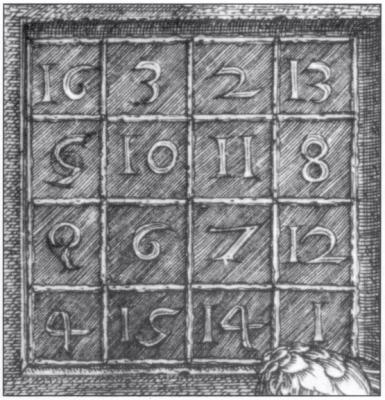Montag, 21. Februar 2011
FAQs zu 'Tyche', dem vermutlichen neuen Planeten
klauslange,22:27h
Während sich ja deutsche Blocker, die sich als Astronomen gerne soooo seriös gebärden, meist über einen eventuellen neu zu entdeckenden Planeten von Superjupiterausmaßen in der Oortschen Wolke sehr ablehnend äußern oder sich über entsprechende Meldung lustug machen, sieht die Redaktion von sciencedaily die Sache viel sachlicher und beantwortet oft gestellte Fragen zum Thema:
http://www.sciencedaily.com/releases/2011/02/110220204429.htm
Frequently Asked Questions
Q: When could data from WISE confirm or rule out the existence of the hypothesized planet Tyche?
A: It is too early to know whether WISE data confirms or rules out a large object in the Oort cloud. Analysis over the next couple of years will be needed to determine if WISE has actually detected such a world or not. The first 14 weeks of data, being released in April 2011, are unlikely to be sufficient. The full survey, scheduled for release in March 2012, should provide greater insight. Once the WISE data are fully processed, released and analyzed, the Tyche hypothesis that Matese and Whitmire propose will be tested.
Q: Is it a certainty that WISE would have observed such a planet if it exists?
A: It is likely but not a foregone conclusion that WISE could confirm whether or not Tyche exists. Since WISE surveyed the whole sky once, then covered the entire sky again in two of its infrared bands six months later, WISE would see a change in the apparent position of a large planet body in the Oort cloud over the six-month period. The two bands used in the second sky coverage were designed to identify very small, cold stars (or brown dwarfs) -- which are much like planets larger than Jupiter, as Tyche is hypothesized to be.
Q: If Tyche does exist, why would it have taken so long to find another planet in our solar system?
A: Tyche would be too cold and faint for a visible light telescope to identify. Sensitive infrared telescopes could pick up the glow from such an object, if they looked in the right direction. WISE is a sensitive infrared telescope that looks in all directions.
Q: Why is the hypothesized object dubbed "Tyche," and why choose a Greek name when the names of other planets derive from Roman mythology?
A: In the 1980s, a different companion to the sun was hypothesized. That object, named for the Greek goddess "Nemesis," was proposed to explain periodic mass extinctions on Earth. Nemesis would have followed a highly elliptical orbit, perturbing comets in the Oort Cloud roughly every 26 million years and sending a shower of comets toward the inner solar system. Some of these comets would have slammed into Earth, causing catastrophic results to life. Recent scientific analysis no longer supports the idea that extinctions on Earth happen at regular, repeating intervals. Thus, the Nemesis hypothesis is no longer needed. However, it is still possible that the sun could have a distant, unseen companion in a more circular orbit with a period of a few million years -- one that would not cause devastating effects to terrestrial life. To distinguish this object from the malevolent "Nemesis," astronomers chose the name of Nemesis's benevolent sister in Greek mythology, "Tyche."
http://www.sciencedaily.com/releases/2011/02/110220204429.htm
Frequently Asked Questions
Q: When could data from WISE confirm or rule out the existence of the hypothesized planet Tyche?
A: It is too early to know whether WISE data confirms or rules out a large object in the Oort cloud. Analysis over the next couple of years will be needed to determine if WISE has actually detected such a world or not. The first 14 weeks of data, being released in April 2011, are unlikely to be sufficient. The full survey, scheduled for release in March 2012, should provide greater insight. Once the WISE data are fully processed, released and analyzed, the Tyche hypothesis that Matese and Whitmire propose will be tested.
Q: Is it a certainty that WISE would have observed such a planet if it exists?
A: It is likely but not a foregone conclusion that WISE could confirm whether or not Tyche exists. Since WISE surveyed the whole sky once, then covered the entire sky again in two of its infrared bands six months later, WISE would see a change in the apparent position of a large planet body in the Oort cloud over the six-month period. The two bands used in the second sky coverage were designed to identify very small, cold stars (or brown dwarfs) -- which are much like planets larger than Jupiter, as Tyche is hypothesized to be.
Q: If Tyche does exist, why would it have taken so long to find another planet in our solar system?
A: Tyche would be too cold and faint for a visible light telescope to identify. Sensitive infrared telescopes could pick up the glow from such an object, if they looked in the right direction. WISE is a sensitive infrared telescope that looks in all directions.
Q: Why is the hypothesized object dubbed "Tyche," and why choose a Greek name when the names of other planets derive from Roman mythology?
A: In the 1980s, a different companion to the sun was hypothesized. That object, named for the Greek goddess "Nemesis," was proposed to explain periodic mass extinctions on Earth. Nemesis would have followed a highly elliptical orbit, perturbing comets in the Oort Cloud roughly every 26 million years and sending a shower of comets toward the inner solar system. Some of these comets would have slammed into Earth, causing catastrophic results to life. Recent scientific analysis no longer supports the idea that extinctions on Earth happen at regular, repeating intervals. Thus, the Nemesis hypothesis is no longer needed. However, it is still possible that the sun could have a distant, unseen companion in a more circular orbit with a period of a few million years -- one that would not cause devastating effects to terrestrial life. To distinguish this object from the malevolent "Nemesis," astronomers chose the name of Nemesis's benevolent sister in Greek mythology, "Tyche."
... comment

